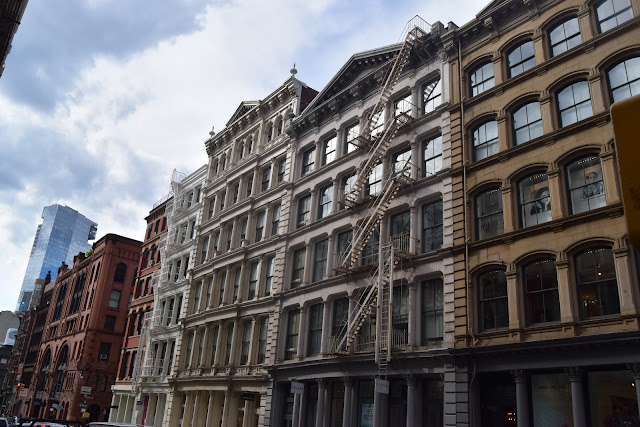What is Cast Iron Architecture?
 |
| The Liberty Bridge in Budapest, Hungary, 1896 |
By Daniel Fischermann
Cast-iron architecture is a style where cast iron is used as a major component of either the structure or the facade of buildings or other structures such as bridges, lamps, gates, cranes and more. Cast-iron architecture is barely an actual style and some might say that cast-iron architecture is not a style at all but just a way of using the technology. Cast iron usage made it possible to create an architectural expression that was not possible before. Windows could fill much more of the façade, and buildings could have a lighter and more elegant expression as cast iron made the buildings stronger. It has been used in buildings and other structures as part of the decoration, ornamentation, as entire facades and as bearing elements during the second half of the 19th century and the beginning of the 20th century. The usage of cast iron was replaced by steel during the beginning of the 20th century, and so the golden age of cast iron architecture was very brief.
Cast iron was used in both commercial buildings and private residences for many reasons.
- Cast Iron was an inexpensive way to reproduce ornate facades
- Grand architecture symbolic and ornamentation became affordable
- Thought to be a fireproof (it wasn't)
- Allowed a more open floor plan design, with space to accommodate larger windows for shops and apartments
- Elaborate facades could be mass produced rapidly
- Prefabrication enabled portability—entire buildings could be constructed in one place and shipped all over the world.
- Cast iron molds could be reused, allowing for the development of architectural catalogs of module patterns that could be optioned to prospective clients
- Easy repair of broken or weathered components, if the mold still existed
The Famous SoHo Cast-Iron Buildings
 |
| Cast Iron Facades in SoHo New York |
A large section of SoHo is a historic district. This means it is a designated area according to the Landmark Preservation Commission and building are being preserved. The district got its status in 1973, and the status was extended in 2010.
What is Cast Iron?
Casting Iron is a way of processing iron. Cast iron is an alloy of the elements iron, carbon and silicon that is formed into shapes by pouring the molten metal into a mold. Liquid iron is cast into a mold and formed. Cast iron is iron with a high content of carbon - higher than 2%. Cast Iron is a strong material and it will not rust easily, but it is also a brittle material and it will break before it will bend. Carbon impurities can also cost the cast iron to crack.
Cast Iron was Invented by the Chinese more than 2,000 years ago. It was for many centuries to expensive to produce which made it exclusively used for small objects or for tools that had to be extremely durable such as cooking pots and plowshares.
In the mid-18th century, the industrial revolution in England and the US improvements in furnace technology allowed prices to drop dramatically, and cast iron found wide use in manufacturing and construction.
The casting process allowed for the first time in the history of man mass production of identical cast iron parts that could be assembled quickly in a factory by workers or directly at a construction site.
There for cast iron became popular in railway bridges, boilers, lamp posts, fences, pipes, balconies, railings, benches, gates and machine parts (see my other articles for examples).
Cast iron's ability to take finely designed shapes made it suitable for facades, gates, door handles, sculpture and ornamentation as well. Its great strength allowed load-bearing forms to be thinner and lighter than in stone structures, so buildings could be taller and windows could be larger than was previously possible. This made a way for early skyscrapers.
The melting point at around 1.100 °C is also about 300-400 °C lower than the melting point for iron. This and the fact that the material is brittle, made steel more popular in time.
 |
| Cast iron and Copper facade from Copenhagen, the building is called "Løvenborg" (Lion's Castle) from 1906 |



Great Post with useful information. Thank you. Share more updates about black front door handle
ReplyDelete